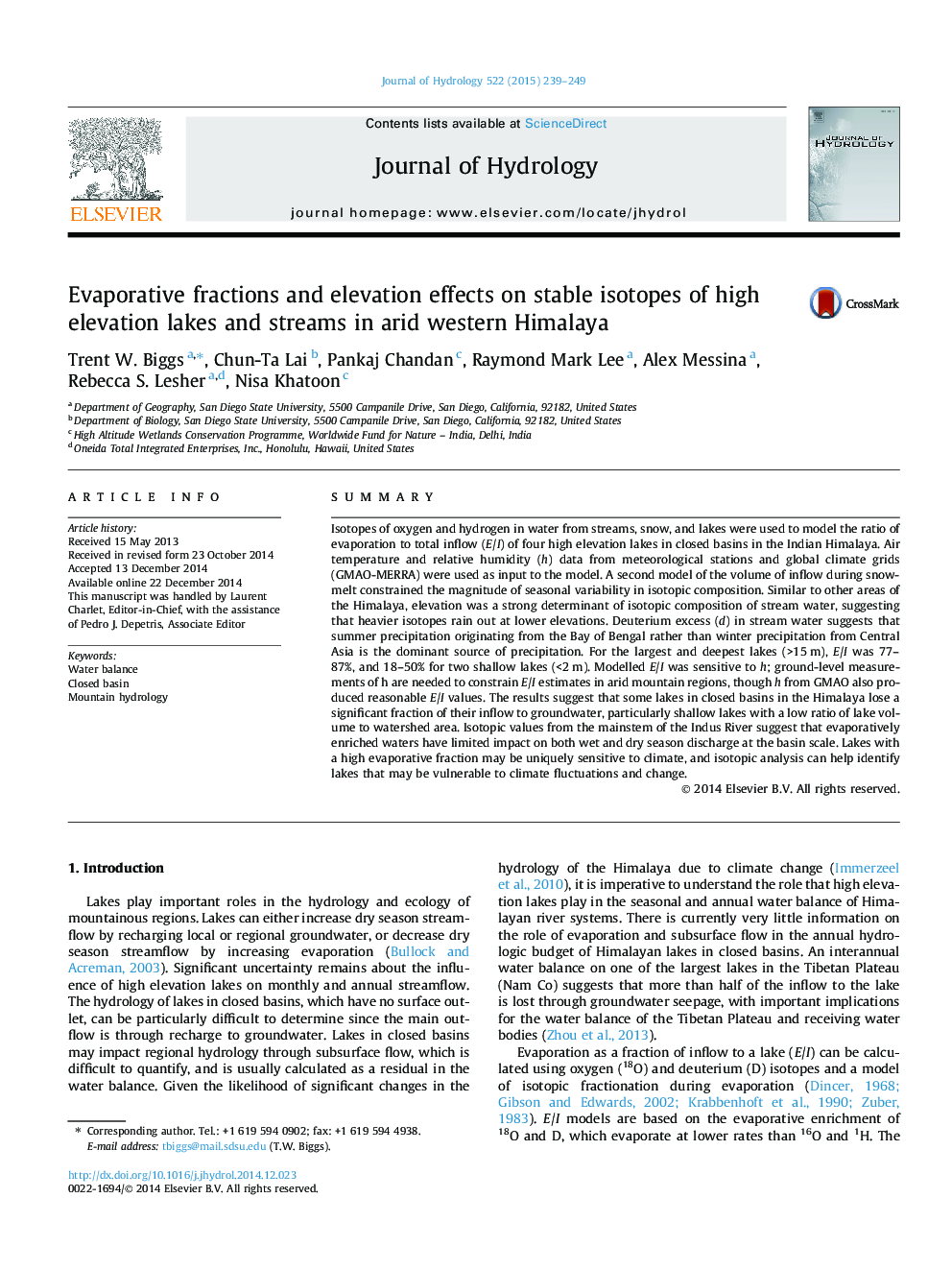| کد مقاله | کد نشریه | سال انتشار | مقاله انگلیسی | نسخه تمام متن |
|---|---|---|---|---|
| 6411289 | 1629928 | 2015 | 11 صفحه PDF | دانلود رایگان |
- Stable isotopes of oxygen and hydrogen constrain water balance of Himalayan lakes.
- Elevation-isotope relationship in streams changed little with elevation.
- Largest lakes showed high evaporation and little loss to outflow.
- Little isotopic evidence of hydrologic contribution of enriched lakes to Indus River.
SummaryIsotopes of oxygen and hydrogen in water from streams, snow, and lakes were used to model the ratio of evaporation to total inflow (E/I) of four high elevation lakes in closed basins in the Indian Himalaya. Air temperature and relative humidity (h) data from meteorological stations and global climate grids (GMAO-MERRA) were used as input to the model. A second model of the volume of inflow during snowmelt constrained the magnitude of seasonal variability in isotopic composition. Similar to other areas of the Himalaya, elevation was a strong determinant of isotopic composition of stream water, suggesting that heavier isotopes rain out at lower elevations. Deuterium excess (d) in stream water suggests that summer precipitation originating from the Bay of Bengal rather than winter precipitation from Central Asia is the dominant source of precipitation. For the largest and deepest lakes (>15Â m), E/I was 77-87%, and 18-50% for two shallow lakes (<2Â m). Modelled E/I was sensitive to h; ground-level measurements of h are needed to constrain E/I estimates in arid mountain regions, though h from GMAO also produced reasonable E/I values. The results suggest that some lakes in closed basins in the Himalaya lose a significant fraction of their inflow to groundwater, particularly shallow lakes with a low ratio of lake volume to watershed area. Isotopic values from the mainstem of the Indus River suggest that evaporatively enriched waters have limited impact on both wet and dry season discharge at the basin scale. Lakes with a high evaporative fraction may be uniquely sensitive to climate, and isotopic analysis can help identify lakes that may be vulnerable to climate fluctuations and change.
Journal: Journal of Hydrology - Volume 522, March 2015, Pages 239-249
